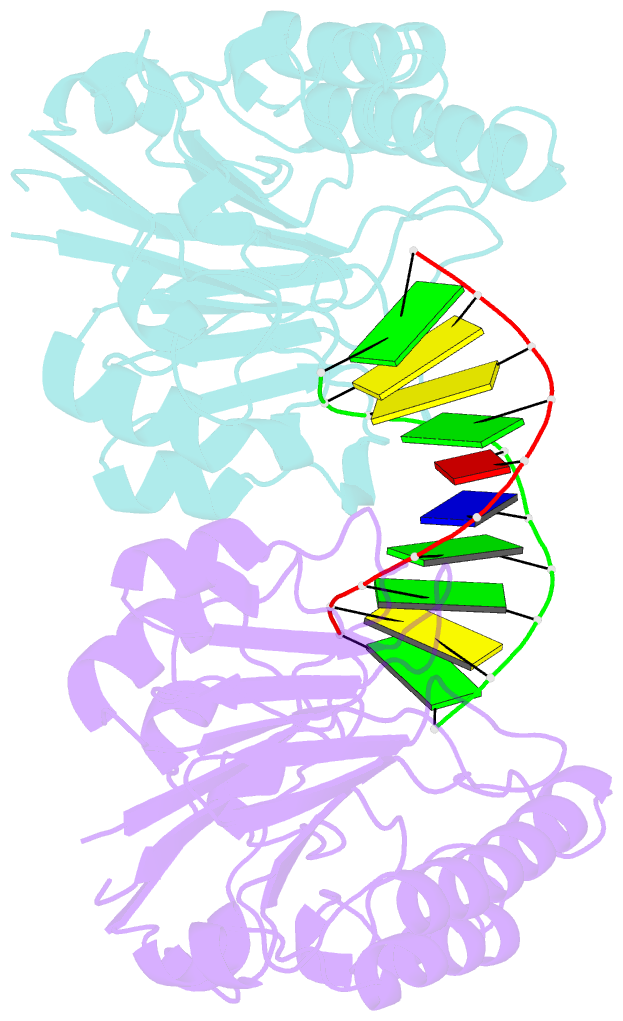Summary information and primary citation
- PDB-id
- 2voa; SNAP-derived features in text and JSON formats;
DNAproDB
- Class
- lyase
- Method
- X-ray (1.7 Å)
- Summary
- Structure of an ap endonuclease from archaeoglobus fulgidus
- Reference
- Schmiedel R, Kuettner EB, Keim A, Strater N, Greiner-Stoffele T (2009): "Structure and Function of the Abasic Site Specificity Pocket of an Ap Endonuclease from Archaeoglobus Fulgidus." DNA Repair, 8, 219. doi: 10.1016/J.DNAREP.2008.10.009.
- Abstract
- The major AP endonuclease in Escherichia coli Exonuclease III (ExoIII) is frequently used in gene technology due to its strong exonucleolytic activity. A thermostabilized variant of ExoIII or a homologous enzyme from thermophilic organisms could be most useful for further applications. For this purpose we characterized a nuclease from the hyperthermophilic archaeon Archaeoglobus fulgidus (Af_Exo), which shares 33% overall sequence identity and 55% similarity to ExoIII. The gene coding for this thermostable enzyme was cloned and expressed in E. coli. The purified protein shows a strong Mg(2+)-dependent nicking activity at AP-sites, nicking of undamaged double-stranded (ds) DNA and a weak exonucleolytic activity. A V217G variant of the enzyme was crystallized with decamer ds-DNA molecule, and the three-dimensional structure was determined to 1.7A resolution. Besides our goal to find or produce a thermostable exonuclease, the structural and catalytic data of Af_Exo and a series of mutant proteins, based on the crystal structure, provide new insight into the mechanism of abasic site recognition and repair. Each of the hydrophobic residues Phe 200, Trp 215 and Val 217, forming a binding pocket for the abasic deoxyribose in Af_Exo, were mutated to glycine or serine. By expanding the size of the binding pocket the unspecific endonucleolytic activity is increased. Thus, size and flexibility of the mostly hydrophobic binding pocket have a significant influence on AP-site specificity. We suggest that its tight fitting to the flipped-out deoxyribose allows for a preferred competent binding of abasic sites. In a larger or more flexible pocket however, intact nucleotides more easily bind in a catalytically competent conformation, resulting in loss of specificity. Moreover, with mutations of Phe 200 and Trp 215 we induced a strong exonucleolytic activity on undamaged DNA.





